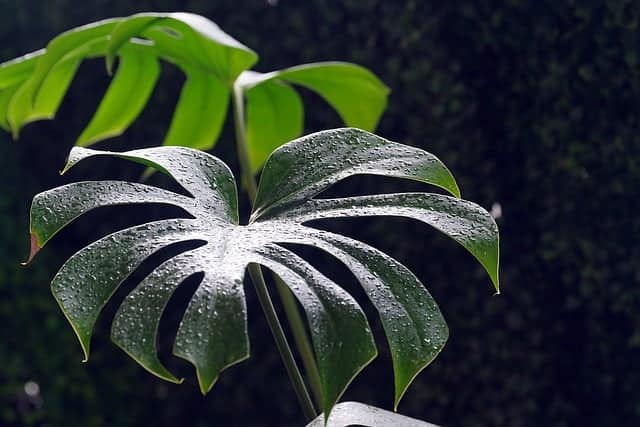Monstera plants are a popular choice for indoor plant enthusiasts due to their striking appearance and low maintenance requirements. However, it is not uncommon for Monstera plants to develop water droplets on their leaves, which can be concerning for plant owners.
While it may seem like a cause for alarm, there are several reasons why Monstera plant have water droplets on their leaves.
Understanding the Monstera plant and its unique characteristics is essential to determining why it may have water droplets. Monstera plants are tropical plants that grow in humid environments, and they have large leaves that are designed to absorb moisture.
Additionally, Monstera plants have a unique process called transpiration, where they release water vapor through small pores on their leaves. These factors can contribute to the development of water droplets on Monstera leaves.
Key Takeaways:
- Monstera plants are tropical plants that grow in humid environments and have large leaves designed to absorb moisture.
- Monstera plants have a unique process called transpiration, where they release water vapor through small pores on their leaves, which can contribute to the development of water droplets.
- Proper watering, feeding, and environmental conditions are crucial for maintaining the health of Monstera plants and preventing the development of water droplets.
Also don’t miss:
- Why Does My Mint Plant Keep Dying?
- Why Does My Basil Plant Keep Dying?
- Why Does My Jade Plant Have Black Spots?
Understanding Monstera Plant
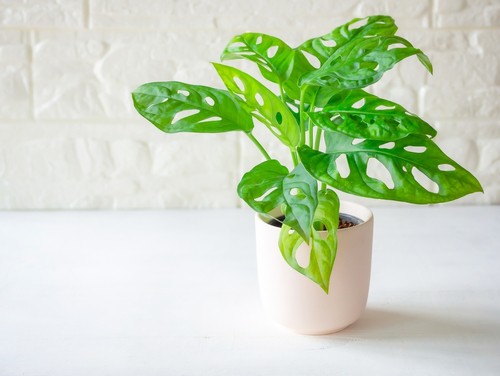
Monstera plants, also known as Swiss cheese plants, are popular indoor plants due to their large, unique leaves and easy-to-care-for nature. These plants are native to the tropical regions of Central and South America and can grow up to 10 feet tall in their natural habitat.
One of the most interesting features of the Monstera plant is its ability to release water droplets from its leaves, a process called guttation. This is a natural occurrence that happens when the plant has taken in more water than it needs, and the excess is released through small pores on the leaf surface.
Guttation is not harmful to the plant and is actually a sign that the plant is healthy and well-hydrated. In fact, it is a crucial process in the life of plants such as Monstera, as it helps regulate water balance and remove excess minerals from the plant’s system.
Monstera plants are relatively low maintenance and can thrive in a variety of lighting conditions, making them a popular choice for indoor plants. They prefer bright, indirect light and should be watered when the top inch of soil feels dry to the touch.
Overwatering can lead to root rot and other issues, so it is important to avoid saturating the soil.
Monstera Plant Have Water Droplets
Monstera plants are known for their large, glossy leaves that add a tropical feel to any space. However, some Monstera plant owners may notice water droplets on their leaves. This can be concerning, but it is usually not a cause for alarm.
In this section, we will discuss the three main reasons why Monstera plants may have water droplets.
1. Guttation in Monstera Plants
One reason for water droplets on Monstera plant leaves is guttation. Guttation is a natural process through which plants release excess water and mineral salts in their leaf tips through hydathodes. When a Monstera plant has too much water in its soil, it may release water droplets through guttation.
2. Dew Formation on Monstera Leaves

Another reason for water droplets on Monstera plant leaves is dew formation. Dew forms when moisture in the air condenses onto a surface during the night. Monstera plants are often placed near windows or in rooms with high humidity, which can lead to dew formation on the leaves.
3. Condensation and Monstera Plants
The third reason for water droplets on Monstera plant leaves is condensation. Condensation occurs when warm, moist air comes into contact with a cool surface. Monstera plants may have water droplets on their leaves if they are placed in a room with air conditioning or near a cold draft.
Role of Environment
Monstera plants are native to the tropical regions of Central and South America, where they grow in a humid and natural environment. Therefore, the environment plays a significant role in the growth and development of these plants. In this section, we will discuss the impact of the environment on the guttation process of Monstera plants.
Stress and Monstera Plants
Monstera plants are sensitive to temperature changes and high humidity levels, which can cause stress to the plant. Stressful conditions can lead to guttation, where the plant releases excess water through the leaves. This process is a natural response to stress and helps to regulate the water balance in the plant.
Monstera and Light Requirement
Monstera plants require bright, indirect light to thrive. Insufficient light can cause stress to the plant, leading to guttation. Therefore, it is essential to provide adequate light to your Monstera plant to prevent stress and guttation.
In addition to light, ventilation and air circulation also play a crucial role in the growth and development of Monstera plants. Poor ventilation and air circulation can lead to high humidity levels, which can cause stress to the plant and trigger guttation.
Watering Your Monstera Plant

When it comes to watering your Monstera plant, there are a few things to keep in mind. Understanding soil and drainage, as well as roots and water absorption, are crucial factors to consider.
1. Understanding Soil and Drainage
Monstera plants prefer well-draining soil that allows water to flow through easily. This means avoiding heavy clay soils that can become waterlogged and suffocate the roots. A good quality potting mix that is specifically formulated for houseplants is a great option.
When potting your Monstera, make sure to choose a container with drainage holes. This will allow excess water to escape and prevent the soil from becoming waterlogged. It’s also a good idea to place a saucer or tray underneath the pot to catch any excess water.
2. Roots and Water Absorption
Monstera plants have a shallow root system, which means they are susceptible to overwatering. Overwatering can lead to root rot, a serious condition that can kill the plant. To avoid overwatering, it’s important to allow the soil to dry out slightly between waterings.
When watering your Monstera, make sure to water deeply and thoroughly. This will encourage the roots to grow deeper into the soil and absorb water more efficiently. It’s also a good idea to water in the morning, as this will allow excess water to evaporate throughout the day.
3. Watering Schedule
The frequency of watering your Monstera will depend on a few factors, such as the size of the pot, the amount of light the plant receives, and the temperature and humidity of the environment. As a general rule, it’s best to wait until the top inch of soil has dried out before watering again.
It’s important to note that overwatering can be just as harmful as underwatering. If you notice that the soil is consistently wet or the plant is showing signs of stress, such as yellowing leaves or wilting, it’s a sign that the plant may be getting too much water.
4. Moisture Level
To ensure that your Monstera is getting the right amount of water, it’s a good idea to monitor the moisture level of the soil. You can do this by sticking your finger into the soil up to the second knuckle. If the soil feels dry, it’s time to water. If it feels moist, it’s best to wait a few more days before watering again.
Transpiration in Monstera Plants
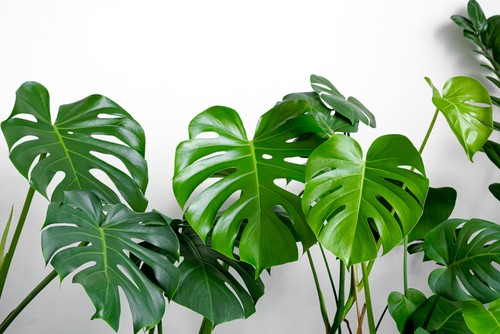
Monstera plants are known for their large, glossy leaves that make them popular houseplants. However, sometimes these plants can develop water droplets on their leaves, which may cause concern among plant owners. One reason for this phenomenon is transpiration.
Transpiration is the process by which plants release water vapor into the atmosphere through their leaves. In Monstera plants, this process occurs during the day when the stomata, or pores on the leaves, are open.
Water is transported from the roots to the leaves through the xylem tissue in the plant. This water, along with minerals and nutrients, is used by the plant for various processes.
During transpiration, water vapor is released from the leaves into the surrounding air. This process helps to regulate the temperature of the plant and prevent it from overheating. In addition, it helps to transport nutrients and minerals throughout the plant.
The rate of transpiration in Monstera plants can be affected by various factors, including temperature, humidity, and light intensity. For example, during hot and dry weather, the rate of transpiration may increase, leading to more water loss from the plant.
Conversely, during cool and humid weather, the rate of transpiration may decrease, leading to less water loss from the plant.
Feeding Your Monstera Plant
To keep your Monstera plant healthy and happy, it is essential to feed it with the right nutrients. The right feeding regimen will ensure that your plant grows to its full potential and produces healthy leaves. In this section, we will discuss the importance of phloem in Monstera plants and how to feed your plant properly.
Understanding Phloem in Monstera
Phloem is an essential part of Monstera plants. It is the vascular tissue that transports nutrients and minerals from the roots to the rest of the plant.
Phloem is responsible for the movement of sugars, amino acids, and other organic compounds that are produced during photosynthesis. Without phloem, your Monstera plant would not be able to grow and produce healthy leaves.
When feeding your Monstera plant, it is important to understand the role of phloem. Nutrients and minerals are transported through phloem, so it is important to provide your plant with the right balance of these elements.
Over-fertilizing your plant can damage the phloem and cause nutrient burn, which can lead to stunted growth and unhealthy leaves.
To ensure that your Monstera plant gets the right nutrients, use a balanced fertilizer that contains nitrogen, phosphorus, and potassium. These elements are essential for healthy growth, and a balanced fertilizer will provide your plant with the right amount of each.
Feeding Your Monstera Plant
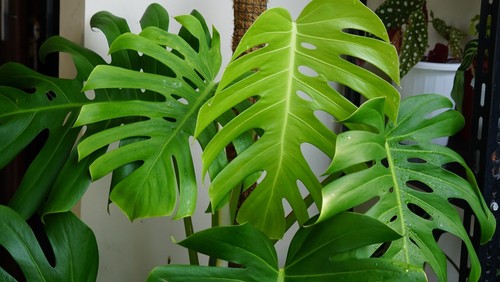
When feeding your Monstera plant, it is important to follow a regular feeding regimen. Feed your plant once a month during the growing season, and once every two months during the dormant season. Use a balanced fertilizer that is specifically designed for Monstera plants.
In addition to fertilizer, you can also add perlite to your soil mix. Perlite is a lightweight, porous material that helps to improve soil aeration and drainage. It also helps to retain moisture, which is important for Monstera plants.
When feeding your Monstera plant, avoid using chemicals or pesticides. These can damage the phloem and cause nutrient burn. Instead, use natural methods to control pests and diseases, such as neem oil or insecticidal soap.
Monstera Plant Health
Monstera plants are generally easy to care for, but like any plant, they can suffer from various health issues. Here are some common problems that can affect the health of your Monstera plant.
Identifying Harmful Pests
Pests can be a big problem for Monstera plants, and it’s important to identify them early so you can take action before they cause too much damage. Here are some common pests that can infest Monstera plants:
- Mites: These tiny pests can be difficult to spot, but they can cause significant damage to your plant. Look for webbing on the leaves and tiny dots that move around.
- Mealybugs: Mealybugs are small, white, fluffy insects that can suck the sap from your plant and cause it to weaken. Look for cottony clusters on the undersides of leaves.
- Scale insects: These insects are small, oval-shaped, and can be brown or black. They attach themselves to the stems and leaves of your plant and can cause it to weaken and die.
Dealing with Fungal Infections
Fungal infections can also be a problem for Monstera plants, especially if they are overwatered or exposed to high humidity. Here are some common fungal infections that can affect Monstera plants:
- Root rot: This is caused by overwatering and can cause the roots of your plant to rot and die. Look for yellowing leaves and a foul smell coming from the soil.
- Leaf burn: This can be caused by exposure to direct sunlight or a sudden change in temperature. Look for brown spots on the leaves and edges.
- Fungal infections: These can be caused by high humidity and poor air circulation. Look for spots on the leaves and a white, powdery substance.
Additional Tips for Monstera Plant Care
Monstera plants are popular houseplants known for their unique leaf patterns and ease of care. In addition to understanding why your Monstera plant may have water droplets, there are a few additional tips to keep in mind for optimal plant health.
1. Potting and Furniture
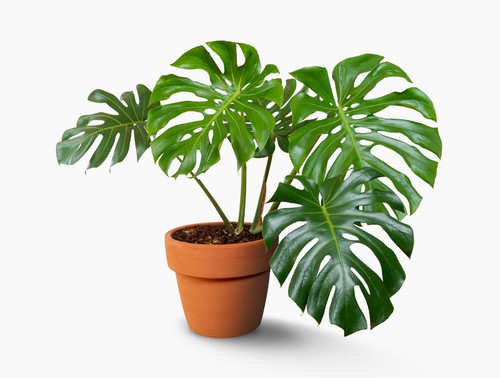
When it comes to potting your Monstera plant, it’s important to choose a pot with drainage holes to prevent water from accumulating in the soil. Additionally, make sure to use a well-draining potting mix to avoid waterlogged roots.
It’s also important to consider the placement of your Monstera plant in relation to furniture. Avoid placing your plant near radiators or air conditioning units, which can dry out the leaves. Similarly, placing your plant in direct sunlight can scorch the leaves. Instead, opt for bright, indirect light to keep your Monstera healthy.
2. Photosynthesis and Non-Toxicity
Monstera plants require sunlight to undergo photosynthesis and produce energy. In addition to providing your plant with adequate light, make sure to dust the leaves regularly to allow for maximum light absorption.
If you have pets or small children, it’s important to note that Monstera plants are toxic if ingested. Consider placing your plant out of reach or opting for a non-toxic alternative if necessary.
3. White Crust and Sticky Residue
If you notice a white crust on the surface of the soil or a sticky residue on the leaves, it may be a sign of excessive fertilizer or pests. Make sure to follow a regular fertilization schedule and inspect your plant regularly for signs of infestation.
4. Leaking and Stains
If your Monstera plant is leaking water or leaving stains on furniture, it may be a sign of overwatering or a lack of drainage. Make sure to allow the soil to dry out slightly between waterings and adjust your watering schedule accordingly.
By following these additional tips for Monstera plant care, you can ensure that your plant stays healthy and beautiful for years to come.
Frequently Asked Questions
Is guttation harmful to Monstera plants?
No, guttation is a natural process that occurs in Monstera plants and is not harmful. It is a way for the plant to release excess water and nutrients through small pores in the leaf tips called hydathodes. These droplets are harmless and can be wiped away with a cloth.
Why are there water droplets on my indoor plant leaves?
The presence of water droplets on indoor plant leaves is usually due to guttation, which is a natural process that occurs in plants. It is important to note that guttation is not harmful to the plant and is a sign that the plant is healthy.
What causes Monstera plants to sweat at night?
Monstera plants can appear to be sweating at night due to a process called transpiration. Transpiration is the loss of water vapor through the stomata on the plant’s leaves. This process helps the plant to cool down and release excess water.
Why do Monstera leaves have brown spots?
Brown spots on Monstera leaves can be caused by a variety of factors, including overwatering, underwatering, low humidity, or pests. It is important to identify the cause of the brown spots and take appropriate action to address the issue.
Why is my Swiss cheese plant dripping water?
Swiss cheese plants, also known as Monstera deliciosa, can appear to be dripping water due to guttation. This is a natural process that occurs in plants and is not harmful. It is important to note that excessive dripping may indicate overwatering, which can be harmful to the plant.
How can I tell if my Monstera plant is overwatered?
Overwatering can be detrimental to Monstera plants, causing the leaves to turn yellow and droop. To determine if a Monstera plant is overwatered, check the soil moisture level by sticking a finger into the soil. If the soil feels wet or waterlogged, the plant may be overwatered.

Hey, I’m Lisa and I’ve been an avid gardener for over 30 years. I love writing, talking and living in the garden! Feel free to connect with me on my socials below

